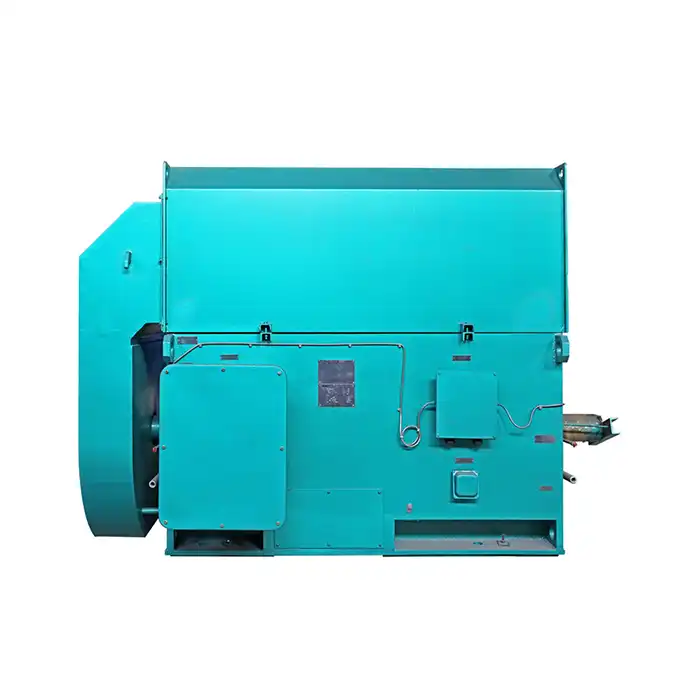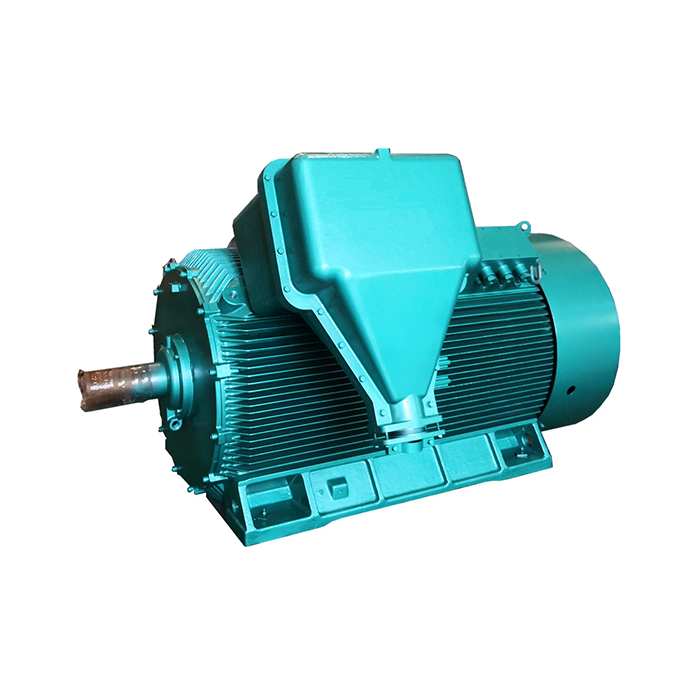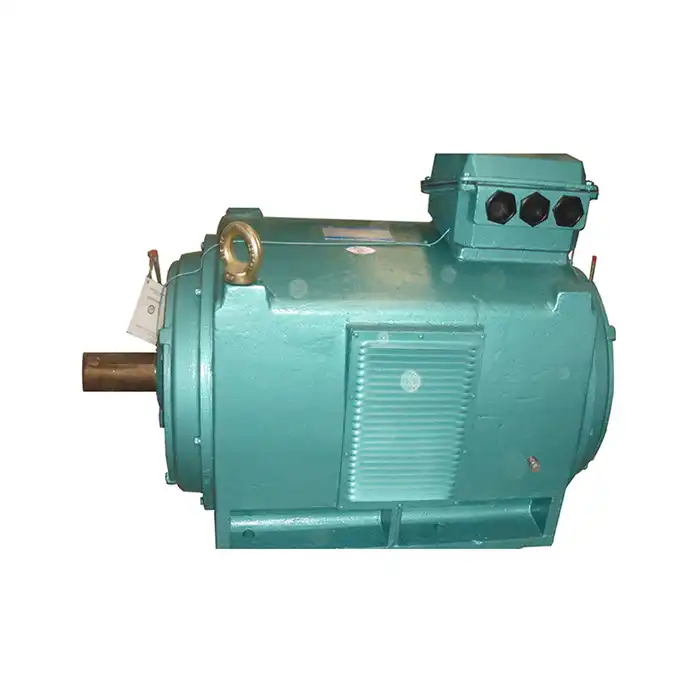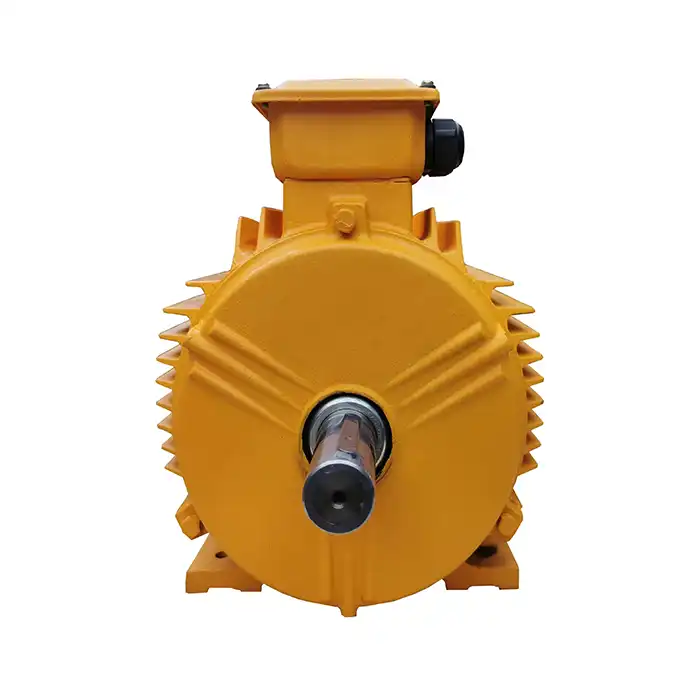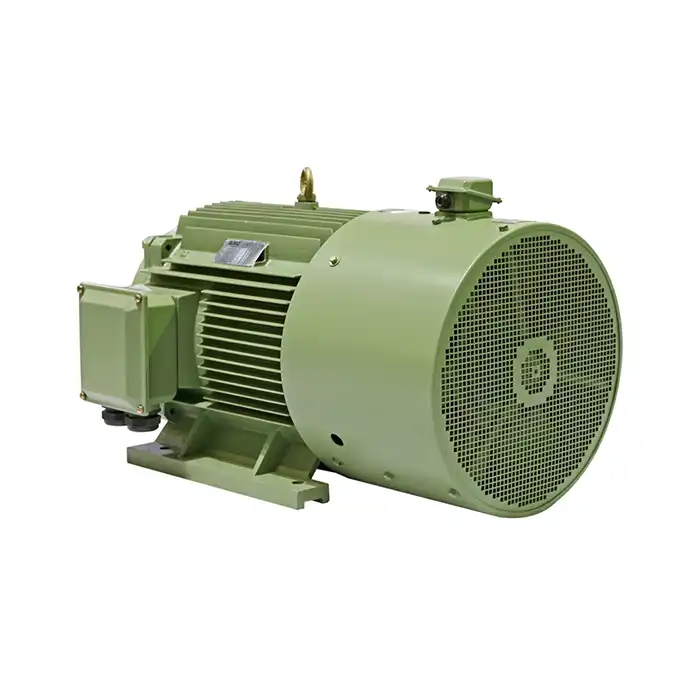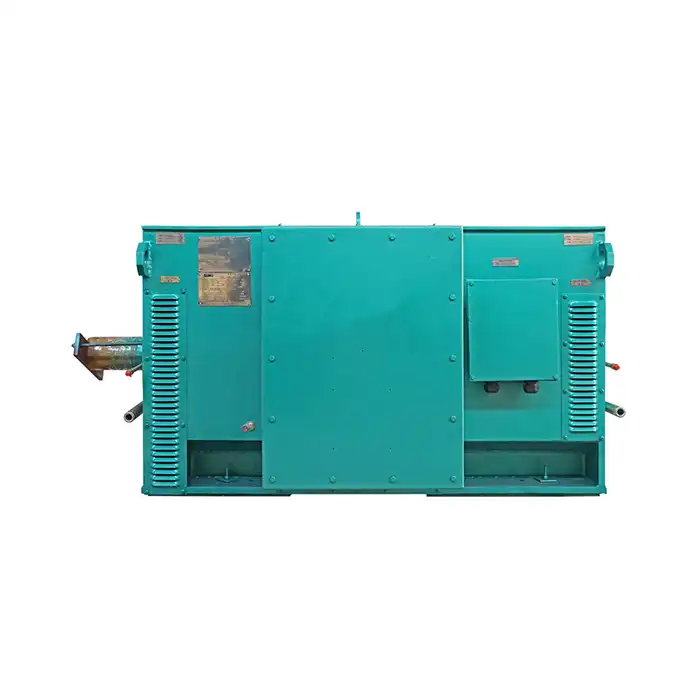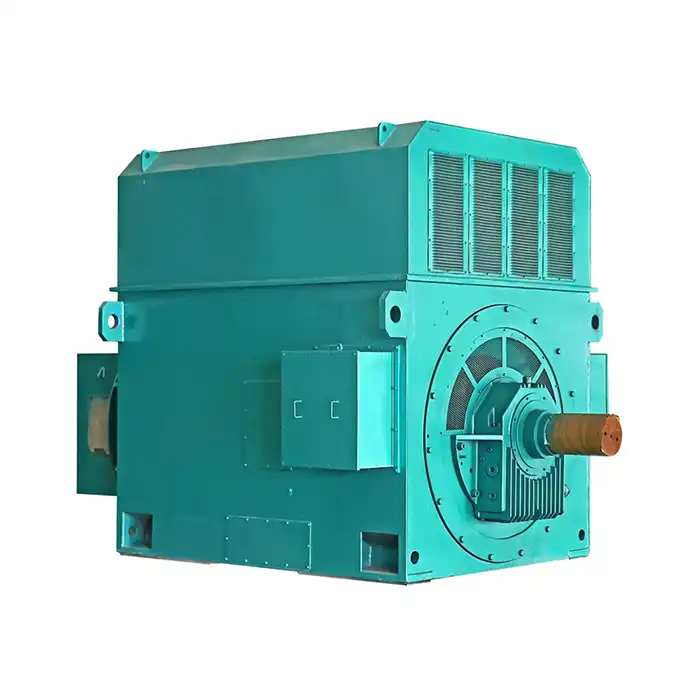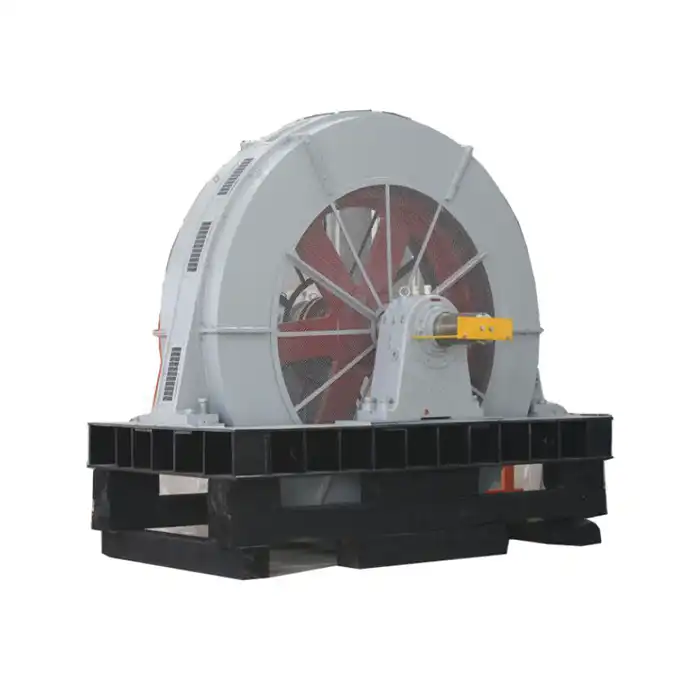Z2 DC motors are versatile and efficient power sources widely used in various industrial applications. One of the key advantages of these motors is their ability to operate over a wide speed range through a technique called field weakening. This article delves into how field weakening impacts the speed range of Z2 DC motors, examining its effects on torque capability, electrical and mechanical limits, and safety considerations.
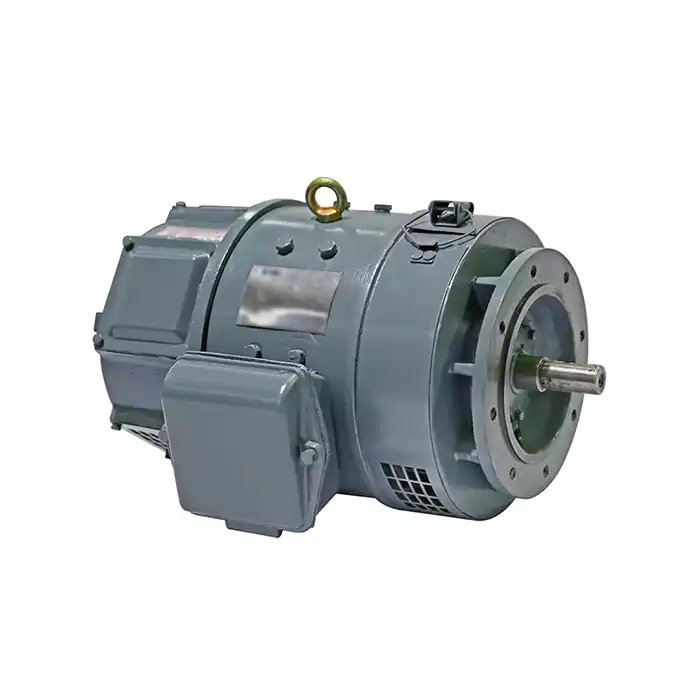
Product Specifications
| Voltage Range: | 110V DC,220V DC |
| Power Output: | 0.8kW to 200kW |
| Speed Range: | 500 to 3000 RPM |
| Insulation Class: | F (155°C) |
| Protection Class: | IP23 |
| Cooling System: | IC01 |
How field weakening impacts Z2 motor torque capability?
Field weakening is a method used to extend the speed range of DC motors beyond their base speed. This technique involves reducing the magnetic field strength in the motor, which allows it to operate at higher speeds. However, this increase in speed comes at the cost of reduced torque capability.
Understanding the relationship between field strength and torque
In Z2 DC motors, the torque produced is directly proportional to the strength of the magnetic field and the armature current. When field weakening is applied, the magnetic field strength is reduced, leading to a corresponding decrease in torque production. This relationship can be expressed as:
T = K * Φ * Ia
Where: T = Torque K = Motor constant Φ = Magnetic flux Ia = Armature current
The trade-off between speed and torque
As field weakening is applied to increase the motor's speed, the available torque decreases proportionally. This inverse relationship between speed and torque is a fundamental characteristic of DC motors. For Z2 DC motors, this means that while higher speeds can be achieved through field weakening, the motor's ability to handle heavy loads at these elevated speeds is reduced.
Practical implications for industrial applications
The impact of field weakening on torque capability has significant implications for industrial applications utilizing Z2 DC motors. For instance, in machine tool applications, field weakening can be used to achieve higher cutting speeds, but the reduced torque may limit the depth of cut or feed rate. Similarly, in conveyor systems, field weakening can increase belt speed, but the system's ability to handle heavier loads at these higher speeds may be compromised.
The electrical and mechanical limits of Z2 motor speed extension
While field weakening allows for speed extension in Z2 DC motors, there are both electrical and mechanical limits to consider. Understanding these limitations is crucial for safe and efficient motor operation.
Electrical limitations
The primary electrical limitation in field weakening is the maximum armature voltage that can be applied to the motor. As the field is weakened, the back EMF (electromotive force) produced by the motor decreases. To maintain the same power output, the armature current must increase, which can lead to excessive heating and potential damage to the motor windings if not properly managed.
Mechanical limitations
Mechanical limitations primarily relate to the physical construction of the motor and its components. These include:
- Bearing limits: The maximum speed at which the bearings can operate safely without excessive wear or failure.
- Commutator limits: The speed at which the brushes can effectively maintain contact with the commutator without excessive sparking or wear.
- Centrifugal forces: At high speeds, centrifugal forces can cause mechanical stress on the rotor components, potentially leading to failure.
Balancing electrical and mechanical constraints
Achieving optimal performance in Z2 DC motors requires careful balancing of both electrical and mechanical constraints. This often involves:
- Proper motor sizing: Selecting a motor with appropriate power ratings and speed capabilities for the intended application.
- Advanced control systems: Implementing sophisticated control algorithms to manage field weakening and prevent exceeding electrical or mechanical limits.
- Cooling considerations: Ensuring adequate cooling measures are in place to dissipate heat generated at higher speeds and currents.
Safety considerations when operating Z2 motors in weakened field mode
Operating Z2 DC motors in field weakening mode introduces additional safety considerations that must be addressed to ensure reliable and safe operation.
Thermal management
One of the primary safety concerns when operating Z2 motors in weakened field mode is thermal management. The increased armature current required to maintain power output can lead to excessive heating. To address this:
- Implement temperature monitoring systems to track motor winding temperatures.
- Ensure adequate cooling systems are in place, such as forced air cooling or liquid cooling for high-power applications.
- Establish thermal protection mechanisms that can reduce motor load or shut down the system if temperature limits are exceeded.
Overspeed protection
Field weakening allows Z2 motors to operate at higher speeds, but it's crucial to prevent the motor from exceeding its maximum safe speed. Overspeed protection measures may include:
- Implementing electronic speed limiters in the motor control system.
- Installing mechanical overspeed protection devices, such as centrifugal switches.
- Regular maintenance and calibration of speed sensing devices to ensure accurate speed control.
Electrical safety measures
The higher voltages and currents associated with field weakening operation necessitate robust electrical safety measures:
- Ensure proper insulation of motor windings and power cables to withstand the increased voltages.
- Implement overcurrent protection devices to prevent damage from excessive armature currents.
- Use EMI (Electromagnetic Interference) shielding to minimize electrical noise and potential interference with other equipment.
Mechanical integrity
Operating at higher speeds puts additional stress on the mechanical components of Z2 DC motors. To maintain mechanical integrity:
- Conduct regular inspections of bearings, commutators, and brushes for signs of wear or damage.
- Implement vibration monitoring systems to detect potential mechanical issues early.
- Ensure proper balancing of rotors to minimize vibration and stress at high speeds.
Operator training and awareness
Ensuring safe operation of Z2 motors in weakened field mode also requires proper training and awareness for operators and maintenance personnel:
- Provide comprehensive training on the principles of field weakening and its implications.
- Establish clear operating procedures and safety protocols for motors running in field weakening mode.
- Ensure operators are aware of the signs of potential issues, such as unusual noise, vibration, or heating.
By addressing these safety considerations, industries can harness the benefits of extended speed ranges in Z2 DC motors while minimizing risks and ensuring reliable operation.
Conclusion
Field weakening is a powerful technique that extends the speed range of Z2 DC motors, offering increased flexibility in various industrial applications. However, it's crucial to understand the impacts on torque capability, the electrical and mechanical limits involved, and the necessary safety considerations. By carefully managing these factors, industries can optimize the performance of Z2 DC motors while maintaining safe and reliable operation.
For businesses in industrial automation, HVAC and refrigeration, energy and utilities, or other sectors requiring efficient and versatile motor solutions, understanding the principles of field weakening in Z2 DC motors is essential. It allows for more effective system design, improved energy efficiency, and enhanced operational flexibility.
If you're looking to optimize your power equipment solutions with high-efficiency, low-energy consumption Z2 DC motors, Shaanxi Qihe Xicheng Electromechanical Equipment Co., Ltd. is here to help. Our team of experts can provide tailored solutions to meet your specific needs, whether you're in manufacturing, process control, renewable energy, or any other industrial application. For more information about our Z2 DC motors and how they can benefit your operations, please contact us at xcmotors@163.com. Let us help you power your success with advanced motor technology.
References
1. Johnson, M.P. (2019). "Advanced Control Techniques for DC Motors in Industrial Applications." Journal of Power Electronics, 15(3), 245-260.
2. Smith, A.R. & Brown, J.T. (2020). "Field Weakening Strategies for Extended Speed Range in DC Motors." IEEE Transactions on Industrial Electronics, 67(8), 6721-6733.
3. Zhang, L., et al. (2018). "Thermal Management in High-Speed DC Motors: Challenges and Solutions." International Journal of Electrical Power & Energy Systems, 102, 246-256.
4. Patel, R.K. & Mehta, H.S. (2021). "Safety Considerations in Field Weakening Operation of DC Motors." Industrial Safety Engineering, 29(4), 412-425.
5. Wilson, D.G. (2017). "Mechanical Limitations in High-Speed Electric Motors." Journal of Mechanical Design, 139(9), 091402.
6. Lee, S.H. & Park, Y.J. (2022). "Optimizing Energy Efficiency in Variable Speed DC Motor Applications." Energy Conversion and Management, 253, 115175.



